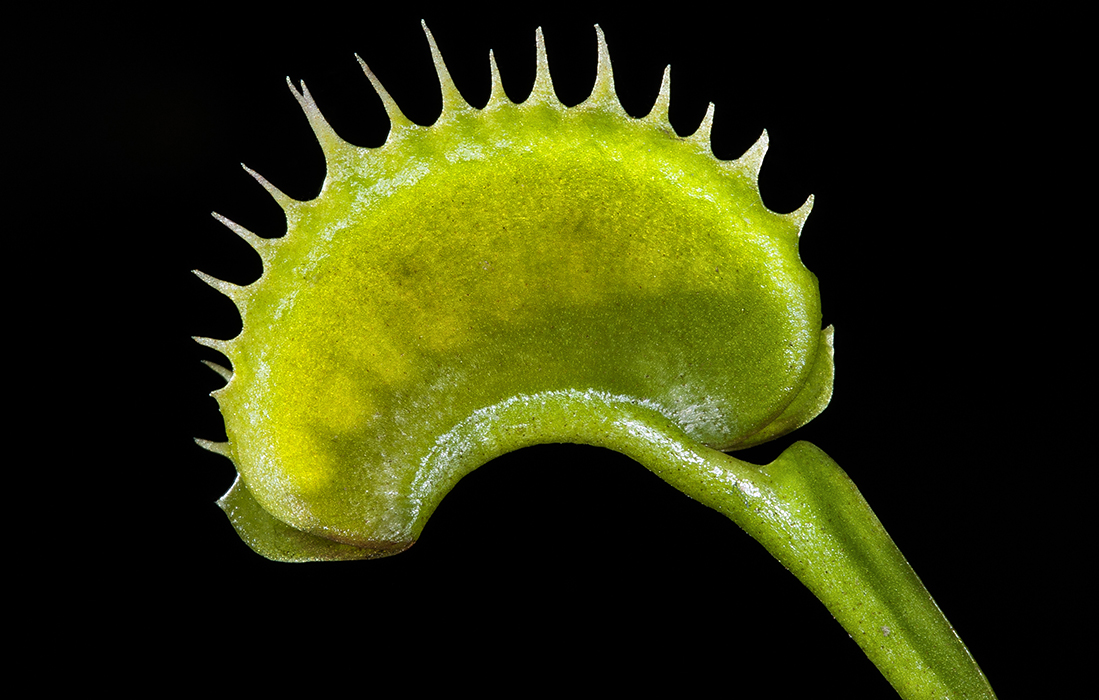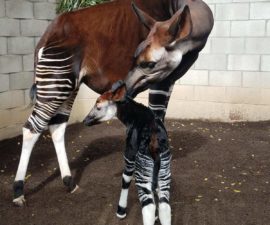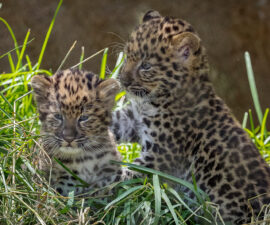To their prey, carnivorous plants are drop-dead gorgeous.
BY Peggy Scott
Photography by Ken Bohn and Tammy Spratt
They are the perfect hunters: patient, alluring, and astonishingly efficient killers. They wait for their victims to come to them, incapacitate their unsuspecting prey, and then consume them—all while firmly rooted in one spot. For carnivorous plants—like those found in the San Diego Zoo’s Bog Garden—it’s not only easy being green, it’s downright convenient!
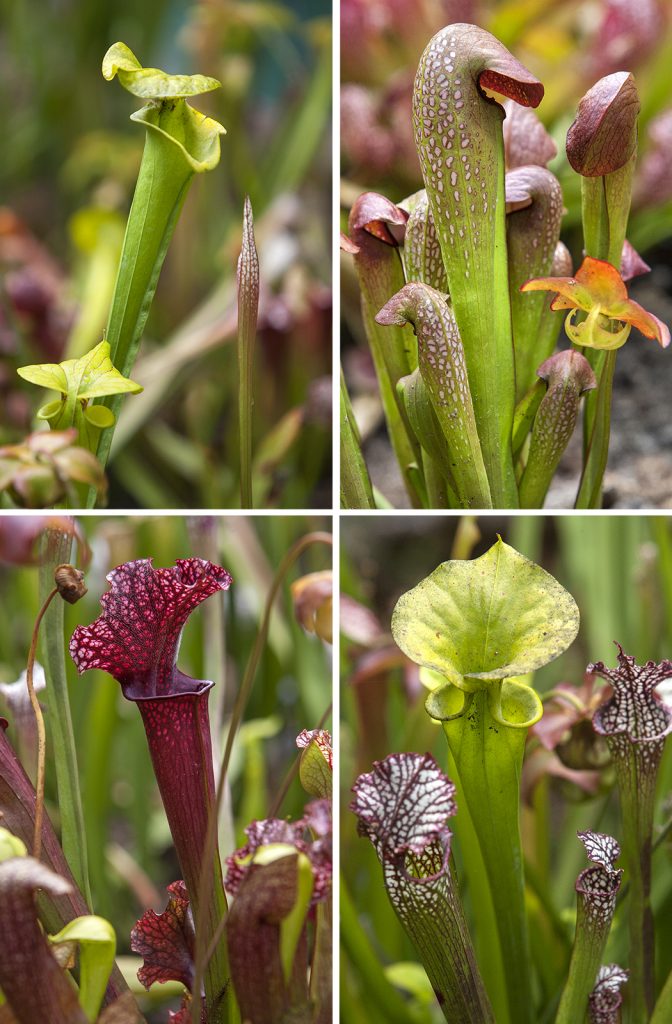
PITCHERS ARE CATCHERS
Pitcher plants use a lethal combination of color, nectar, and potent elixir to attract, disable, and consume their prey.
Found on every continent except Antarctica, carnivorous plants have been on exhibit at the San Diego Zoo since 2001, when the San Diego Carnivorous Plant Society gifted the Zoo with a selection of the insect-gobbling greenery. After a few moves, the Zoo’s Bog Garden put down permanent roots in Monkey Trails in 2004. But unlike other plants, those roots don’t supply food, says Adam Painter, senior horticulturalist at the San Diego Zoo, “Carnivorous plants don’t get their nutrients from the roots,” he explains. “The roots merely draw in water and keep them anchored in place.”
While the Bog Garden sits in prime foot traffic territory, its location, surrounded by captivating little primates, however, can sometimes find the Bog Garden relegated to the role of wallflower. It can be challenging to get people—especially youngsters—to connect with plants, but as Adam has discovered (not unlike his favorite charges), the key is in using the right bait. “It’s hard to get kids excited about plants,” Adam acknowledges. “But these are carnivorous plants—once you start talking about plants that lure, trap, and eat bugs—you’ve got them hooked!”
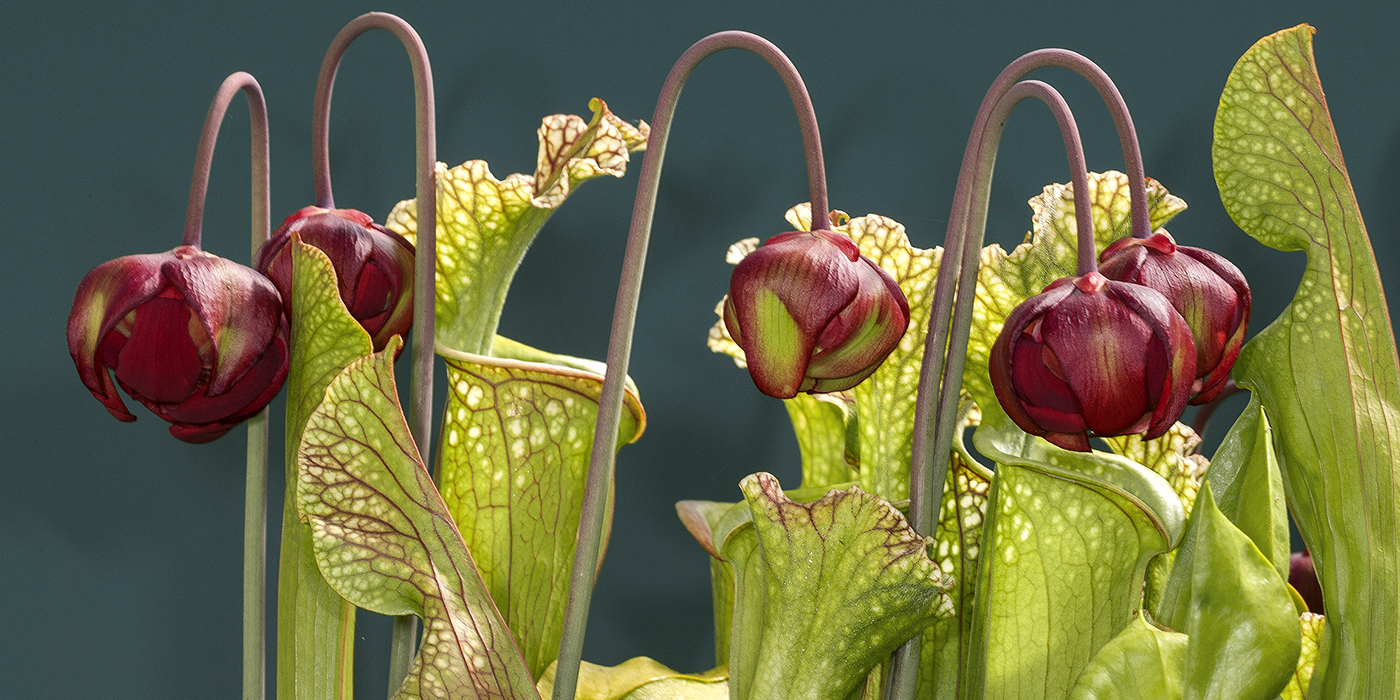
The Perfect Hunting Ground
Carnivorous plants are a product of their environment: bogs, which are nearly sterile, acidic, and low-oxygen. In this habitat, plants, such as the sundews, pitcher plants, Venus fly traps, and butterworts found in the Zoo’s Bog Garden, have adapted to lure, trap, and digest insects and other small animals in order to get necessary nutrition. To provide these plants with their natural environment, the area is kept swampy with deionized water that is filtered to eliminate the salts and minerals found in San Diego’s water supply. The garden is completely saturated every four days to mimic the rainy conditions the plants are used to.
While many different soil types exist in carnivorous plants’ natural habitats, the Zoo’s Bog Garden contains only sand, gravel, and acidic peat moss. The use of deionized water is important, Adam notes. “Regular water, which contains trace minerals, or fertilizers or other organics, would cause these plants to seriously decline or die,” Adam explains, adding that each ficus leaf dropped by surrounding trees must be removed in order to keep the necessary balance.
The most common prey for carnivorous plants include small insects such as gnats, flies, bees, moths, beetles, and ants, although animals as large as frogs, lizards, and small rodents have been found in their traps! And the ways in which these unlucky creatures ended up as a meal are marvels of adaptation.
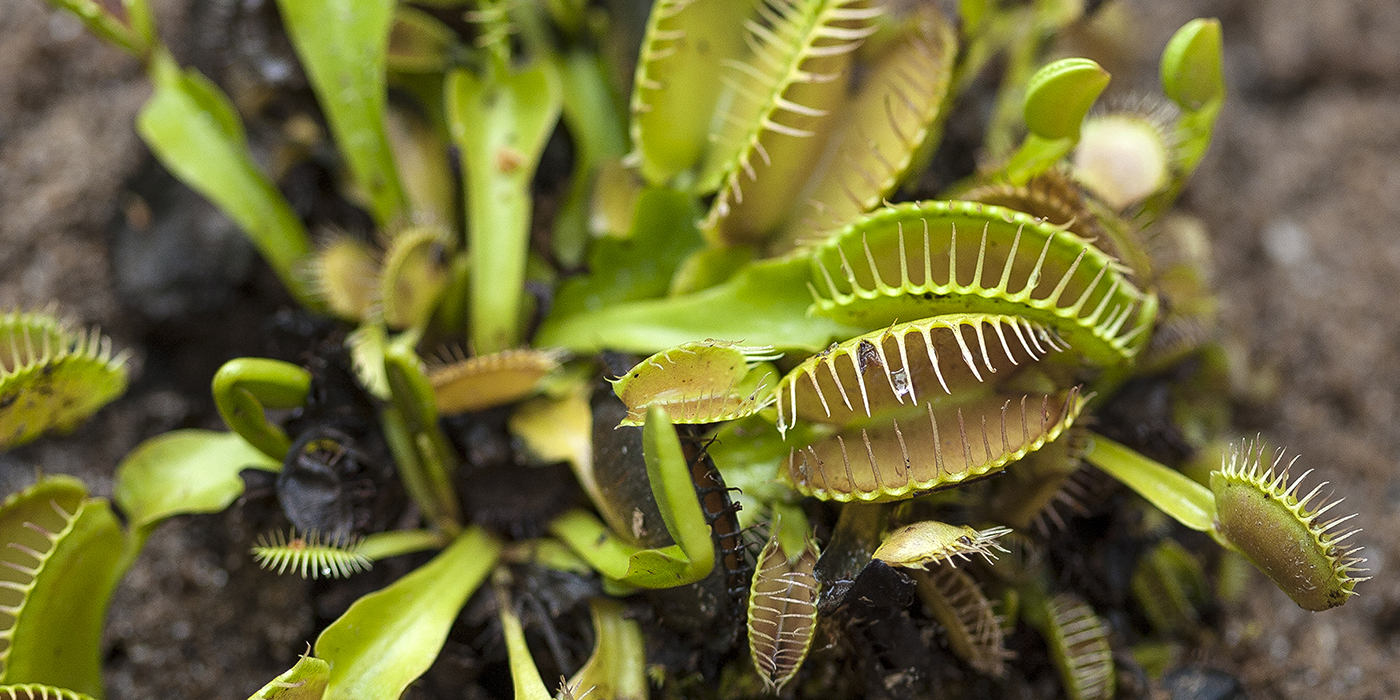
Lethally Alluring
There are a number of enticements in carnivorous plants’ bag of bug-grabbing tricks. They produce flowers in the spring to ensure pollination by the first insect visitors, and then produce leaves to collect those that follow. And to draw them close enough to catch, the plants entice their victims with bright colors and a variety of scents. With smells, apparently beauty is in the nose of the beholder. “Some are sweet and flowery,” Adam says, “but others are not—they can smell like carcasses or even cat urine.” Then the plants use a variety of techniques—from narcotic secretions to adhesive liquids to leaves that snap shut—to trap the creatures. Digestive enzymes go to work, breaking down their prey.
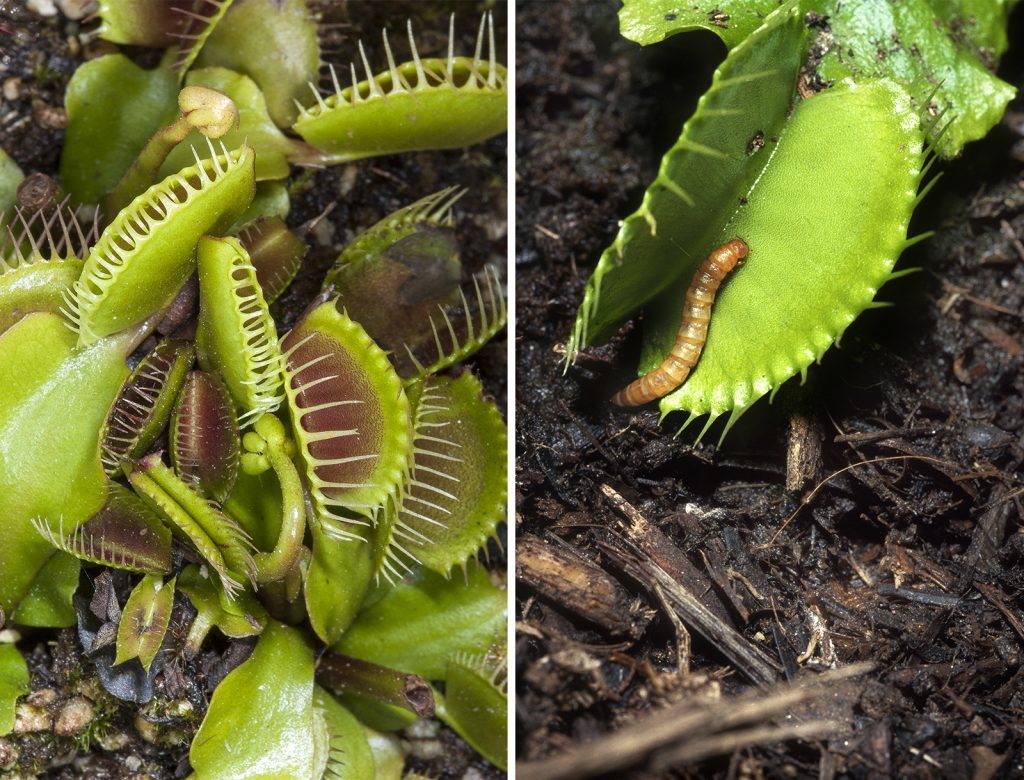
LOVE HURTS
Native only to a 100-square-mile area in North and South Carolina, the Venus flytrap was named after the goddess of love and beauty by the botanist Linnaeus.
The Venus flytrap Dionaea sp. is an active trap, and once its victims land to enjoy sweet nectar, they brush against tiny trigger hairs, causing the trap to snap shut in less than a second. Once the trap is tightly closed, digestive acids and enzymes dissolve the insect, and the plant absorbs the nutrient-rich “soup.” Seven to ten days later, the trap opens, ready for another meal. But there is a limit to their abilities. “Each trap has enough energy to catch from five to seven bugs,” Adam says. “Then that trap dies off, to be replaced by another that grows, and the cycle starts again.” While the Venus flytrap is a successful hunter, it also faces threats of its own, mainly the limited range in which it is found. “A 100-square-mile area in North and South Carolina is the Venus flytrap’s only natural habitat, so one disaster could cause a serious threat to its existence,” Adam says.
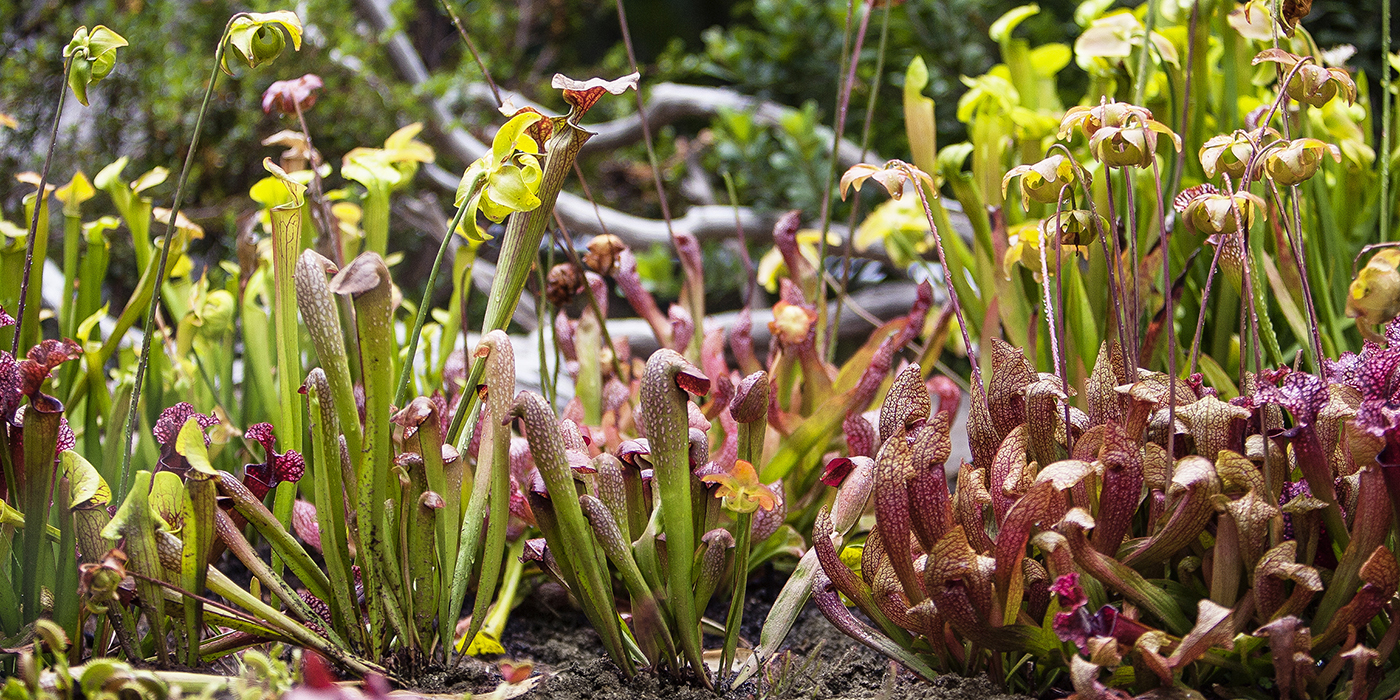
Pitcher Perfect
There are two types of pitcher plants in the Bog Garden, both members of the Sarracenia family: the American, found from the panhandle of Florida to the alkaline bogs of New Jersey, and the tropical, which lives in tropical rain forests. They share a similar feeding strategy: bright colors and sweet nectar attract their prey. A powerful drug in the nectar incapacitates the insect, which begins sliding down the slippery, downward-pointing hairs within the pitcher. The intoxicated insect falls into the digestive acids and enzymes in the bottom, where its nutrient-rich body is then absorbed by the plant.
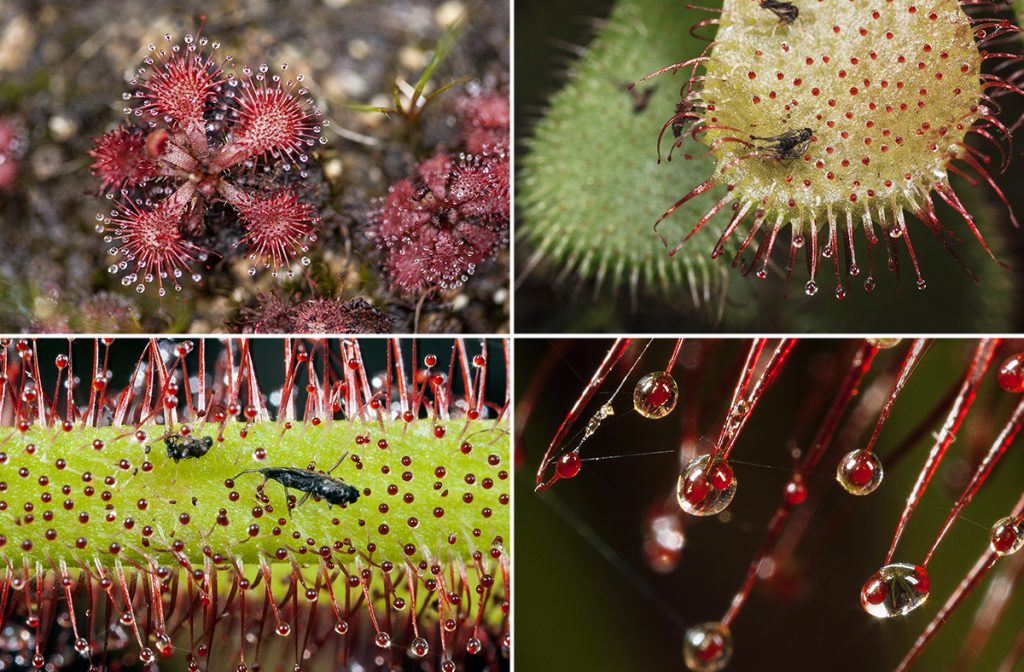
HERE COMES THE SUN(DEW)
Long tentacles on a sundew’s leaves are tipped with colorful nectar that also acts as a powerful glue to trap attracted insects. (CLICK TO ENLARGE)
Sundews Drosera spp., found on almost every continent on Earth, are equipped with long tentacle-covered leaves that are tipped with colorful nectar. The nectar attracts—and then adheres—insects to the leaves. The insect’s struggle to free itself causes the tentacles to produce digestive acids and enzymes, which dissolve most of the insect, whose nutrients are then absorbed by the plant.
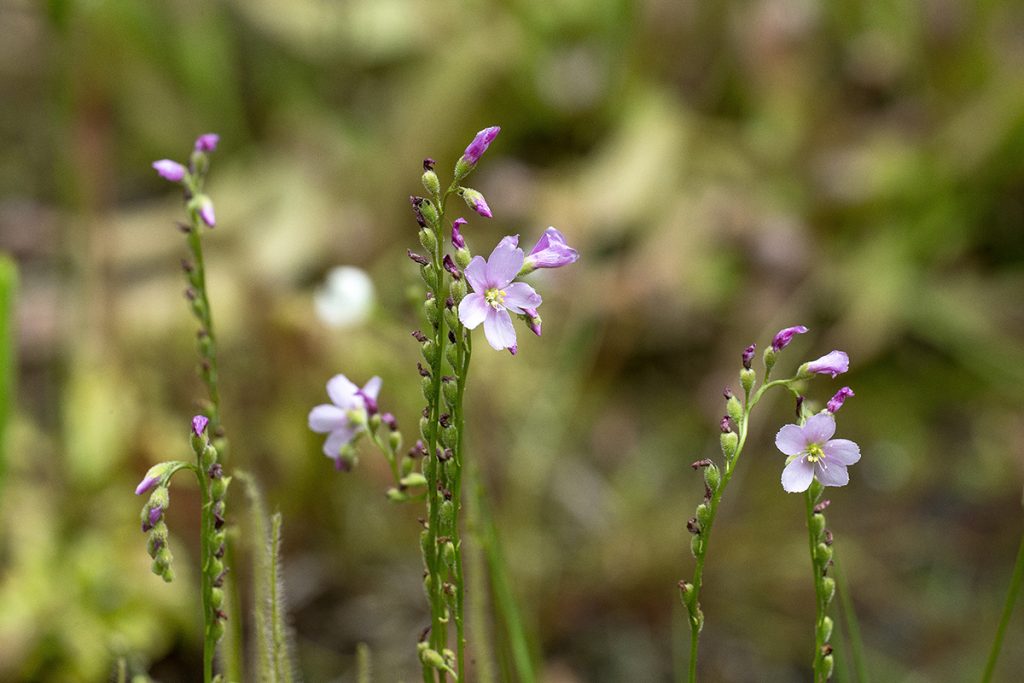
FLOWER POWER
Sundew flowers are raised high above the plant and bloom profusely during the spring and summer. Many are self-pollinating, producing copious amounts of seed.
Found in the Northern Hemisphere, from the Arctic Circle to Mexico, butterworts Pinguicula spp., are also called “Velcro plants” because of the adhesive dots that cover the surface of their leaves. Brightly colored flowers above what seems to be a succulent leaf attract small flying insects to the plant. Tiny glands on the surface of the leaves secrete nectar and trap any small insect that tries to make its way across. Like its sundew exhibit-mate, butterworts respond to a trapped insect’s attempts to free itself by producing digestive enzymes and acids to dissolve their prey.
Adam notes that the very adaptations that make carnivorous plants so interesting also make them collectible and susceptible to numerous threats. “Pollution is an environmental problem, and so is over-collecting,” he says. “By sharing information with guests, we can help them understand how amazing these plants are.” And with any luck, that newfound admiration will “stick” with them.

